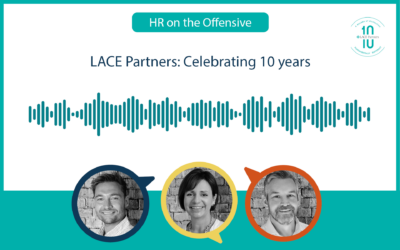Carissa Kilgour from Co.Lab returns to talk about the change in how businesses are utilising their workspaces. How can a business collaborate better when everyone is at home? Will we start to see a move away from mass migration into the big cities? How can you maintain your workplace culture when nobody is in your office? How do you build relationships with those people in your business that you don’t work with all of the time? And how do you train your leaders to manage remotely?
Find out what you missed below, and stay up to date with our latest podcasts by subscribing here.
Let’s build the road between now and when we last spoke to you, which was just as lockdown started. What have you seen since we last spoke?
So much is changing and we have all had so many emotions individually and corporately. There are so many different surveys going on in every organisation and the data is changing week to week. If I reflect back to the conversation we had just a few months ago, my biggest observation of what was happening with corporates at the time was that everyone was amazed and impressed with how well their business had adapted to working in an alternative way. I think everyone was pleasantly surprised that it was going okay and everybody was bringing a positive attitude to try and make it work well.
At the time my biggest observation was that people were rushing into the idea that they didn’t need an office at all. Pretty much every article in the FT, especially in regards to financial services, was around how their global property portfolio wasn’t important whatsoever. Not that much time has passed since then, but we are already starting to see a moderating of attitudes around that. Which is; ‘actually I think I would like to be in an office, together with our teams, for some activities’.
The conversation we had last time was around making sure your office has a real purpose and is driving some sort of value by bringing people together. In the return to work we’ve had over the last six weeks or so it’s been a case of ‘come to the office if there is a reason to meet your colleagues and share ideas’. If you need to do independent work you are probably best doing that from home, you do not need to come into the office for that. What I’ve seen with large offices is a critical analysis of how much space they can reduce in their global property portfolios. That’s financial services, professional services, law firms and media businesses; everyone is looking at what the right size for real estate.
One of my client’s said to me that this was a CFO’s dream because for ages they have wanted to take cost out real estate, and it’s now been proven that people can work in an alternative way. Most clients are still firefighting and working out how we can get people back safely into an office and how do we help employees work productively from wherever they are.
What impact do you think all this change is going to have on the infrastructure around corporate real estate, so the shops and bars around those offices vs. maybe the regional areas? Do you think there will be a reinvigoration of the high street?
Rather than a reduction of spaces being used this is a redistribution. Even in a world where organisations say they won’t have a headquarters you still need to provide some workspace for your people. There is a bit of a red herring here in the perceived cost savings of reducing your real estate portfolio and asking your people to work from home. Not everybody has the space and not everybody as the will. As an employer, can you ask someone to do a job, but then not give them the work environment to do that job?
There’s a major opportunity here for towns and villages across the UK based on where people live. Maybe you won’t gather with your teams there, but you could go to a workplace on the local high street with great Wi-Fi, and all the facilities you need there. I haven’t seen organisations buying into this fully yet, but whether there would be some kind of stipend to allow people to work away from their homes but not from a corporate office remains to be seen.
I see that concept redistributing the money historically spent in city centres to towns where people actually live.
It’s really difficult to collaborate and cross-fertilize ideas remotely. How can you leverage idea generation with these new kinds of set ups?
Prior to the pandemic, for the last ten years I have worked with corporates on how they can introduce more flexible working and optimise their real estate footprint. As burnout and work/life balance became big agenda topics I have worked with organisations to introduce agile working in a more structured way whilst not in the office. There was a real buy-in from HR on that; desire from real estate directors who wanted to repurpose desks into more interesting collaborative spaces, the employees were interested, but there was also some serious reticence and resistance in the business leadership.
Then the pandemic hit and those leaders were happy and surprised that there has been a test case that has shown it can work. That said, attitudes are starting to moderate and we are starting to miss some of the more nuanced conversations you can have in an office. Business leaders are thinking about their attrition and the percentage of the workforce which turns over every single year. If everybody worked from home on a more permanent basis, at a 20% attrition you aren’t that far away from turning over your entire workplace, without ever connecting in a physical environment. There’s a bit more of an understanding now that there’s going to have to be a balance.
Do you think there might be damage to a business’ culture if you work from home and don’t have the opportunity to speak with people outside of your own teams?
Organisations are targeting creativity and innovation and they want to encourage this amongst their staff. One of the design challenges for offices was; how do you design for downtime? How do you design time for people to let their guard down and bring their ‘full selves’ to work?
There is a challenge to culture. I’m a little bit worried about how we need to structure our days that takes away the autonomy we have worked so hard to give people. For example, if we all need to meet on a Wednesday and we need to force those moments together, is it going to be as productive and valuable as when you sat on the side of your desk on a Friday having a chat and came up with a really interesting idea?
The architecture of the new – have there been any new ideas on how offices need to be laid out moving forwards?
I’ve seen a lot of organisations looking to repurpose collaboration space to make room for social distancing. What I think is most exciting in real estate development is the number of businesses thinking about outside spaces, community space and green spaces. This is one of the most positive elements to come from the current difficult situation.
For most of my clients it feels like their plan is not to make any big changes and re-engineer their offices for social distancing other than temporary ways to bring people back safely. When they are thinking about the future, they are thinking about bringing people closer again like we were before, but making those collaboration spaces more purposeful.
How do you connect with people naturally without formally booking a meeting with them?
We’ve done a good job responding and acting in a crisis, but have we actually learnt something as managers? When we start to go back to the office, surveys are saying that people will want a mix; some will want time in the office, some will want more time out of the office. Do reticent leaders who did not want remote working before bringing bad managerial behaviours back when it is safe to do so? This is a few years away for sure, but the question is; how seriously people are training their leaders to manage a remote workforce?
Unless we can do that, the benefits we’ve gained where we are willing to accept each other working this way might get eroded very quickly in the new world.
Even with what we know about this crisis and how the virus transmits, it still poses the question: does it change our human desire to be in a buzzy space? We might be nervous, but does the need go away? Do we want to be in a diverse group of people in a shared canteen, sitting at a communal table? I know I do, and that I want to be with other people.
I think we understand the risk and people are very worried, so it presents a big challenge for these business models designed around shared spaces. From what I’ve seen so far, these businesses are taking it very seriously and publicly detailing their operating procedures and cleaning regiments. The operators of shared spaces will be better resourced and more capable than lots of individual businesses at creating cleaner, safer, tested and well managed responses to this. I hope that the scale of these operators gives them better capability than my business or your business would have.






